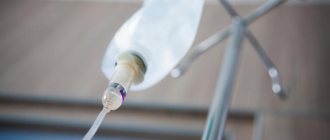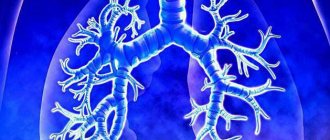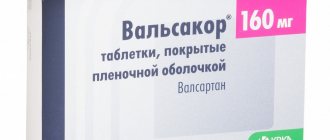Tsiprolet, 500 mg, film-coated tablets, 10 pcs.
Ciprofloxacin is a synthetic broad-spectrum antibacterial drug from the fluoroquinolone group.
Mechanism of action
Ciprofloxacin has in vitro activity against a wide range of gram-negative and gram-positive microorganisms. The bactericidal effect of ciprofloxacin is carried out through the inhibition of bacterial type II topoisomerases (topoisomerase II (DNA gyrase) and topoisomerase IV), which are necessary for the replication, transcription, repair and recombination of bacterial DNA.
Mechanisms of resistance
In vitro resistance to ciprofloxacin is often caused by point mutations in bacterial topoisomerases and DNA gyrase, and develops slowly through multistep mutations. Single mutations may result in decreased susceptibility rather than the development of clinical resistance, but multiple mutations generally lead to the development of clinical resistance to ciprofloxacin and cross-resistance to quinolone drugs. Resistance to ciprofloxacin, as to many other antibacterial drugs, can develop as a result of decreased permeability of the bacterial cell wall (as often occurs in the case of Pseudomonas aeruginosa) and/or activation of elimination from the microbial cell (efflux). The development of resistance caused by the Qnr coding gene localized on plasmids has been reported. Resistance mechanisms that lead to inactivation of penicillins, cephalosporins, aminoglycosides, macrolides and tetracyclines do not likely interfere with the antibacterial activity of ciprofloxacin. Microorganisms resistant to these drugs may be sensitive to ciprofloxacin. The minimum bactericidal concentration (MBC) usually does not exceed the minimum inhibitory concentration (MIC) by more than 2 times.
In vitro susceptibility testing
Reproducible criteria for ciprofloxacin susceptibility testing, approved by the European Committee on Antibacterial Susceptibility Testing (EUCAST), are presented in the table below.
European Committee on Antibacterial Susceptibility Testing. Clinical MIC breakpoints (mg/L) for ciprofloxacin
| Microorganism | Sensitive [mg/l] | Resistant [mg/l] |
| Enterobacteriaceae | ≤0,5 | >1 |
| Pseudomonas spp. | ≤0,5 | >1 |
| Acinetobacter spp. | ≤ 1 | >1 |
| Staphylococcus1spp. | ≤ 1 | >1 |
| Streptococcus pneumoniae2 | < 0,125 | >2 |
| Haemophilus influenzae and Moraxella catarrhalis3 | ≤0,5 | >0,5 |
| Neisseria gonorrhoeae | ≤0,03 | >0,06 |
| Neisseria meningitidis | ≤0,03 | >0,06 |
| Boundary values not related to microorganism species4 | ≤0,5 | >1 |
1 – Staphylococcus spp. – breakpoints for ciprofloxacin and ofloxacin are associated with high-dose therapy.
2 – Streptococcus pneumoniae – wild type S. pneumoniae is not considered susceptible to ciprofloxacin and is therefore classified as intermediately susceptible.
3 – Strains with MIC values above the sensitive/moderately susceptible threshold are very rare and have not been reported to date. If such colonies are detected, identification and antimicrobial susceptibility tests should be repeated and the results should be confirmed by colony testing in a reference laboratory. Until evidence of clinical response is available for strains with confirmed MIC values above the currently used resistance threshold, they should be considered resistant. Haemophilus spp./Moraxella spp. – it is possible to identify strains of Haemophilus influenzae with low sensitivity to fluoroquinolones (MIC for ciprofloxacin – 0.125-0.5 mg/l). There is no evidence of the clinical significance of low resistance in respiratory tract infections caused by H. influenzae.
4 – Non-species-specific breakpoints were determined primarily on the basis of pharmacokinetics/pharmacodynamics data and are independent of species-specific MIC distributions. They are only applicable to species for which a species-specific susceptibility threshold has not been determined, and not to those species for which susceptibility testing is not recommended. For certain strains, the distribution of acquired resistance may vary across geographic regions and over time. Therefore, it is desirable to have local information on resistance, especially when treating serious infections.
Clinical and Laboratory Standards Institute data for MIC breakpoints (mg/L) and diffusion testing (mm) using 5 mcg ciprofloxacin discs are presented in the table below.
Clinical and Laboratory Standards Institute. MIC breakpoints (mg/L) and diffusion testing (mm) using discs
| Microorganism | Sensitive | Intermediate | Resistant |
| Enterobacteriaceae | <1a | 2a | >4a |
| >21b | 16-20b | <15b | |
| Pseudomonas aeruginosa and other bacteria not belonging to the family Enterobacteriaceae | <1a | 2a | >4a |
| >21b | 16-20b | <15b | |
| Staphylococcus spp. | <1a | 2a | >4a |
| >21b | 16-20b | <15b | |
| Enterococcus spp. | <1a | 2a | >4a |
| >21b | 16-20b | <15b | |
| Haemophilus spp. | <1v | — | — |
| >21y | — | — | |
| Neisseria gonorrhoeae | <0.06d | 0.12-0.5d | >1d |
| >41d | 28-40d | <27d | |
| Neisseria meningitides | <0.03е | 0.06e | >0.12e |
| >35f | 33-34f | <32f | |
| Bacillus anthracis Yersinia pestis | <0.25a | — | — |
| Francisellatularensis | <0.5z | — | — |
A. This reproducible standard is only applicable to broth dilution tests using Cationically Adjusted Mueller-Hinton Broth (CAMHB) incubated with air at 35±2°C for 16-20 hours for strains of Enterobacteriaceae, Pseudomonas aeruginosa, etc. bacteria not belonging to the Enterobacteriaceae family, Staphylococcus spp., Enterococcus spp. and Bacillus anthracis; 20-24 hours for Acinetobacter spp., 24 hours for Y. pestis (if growth is insufficient, incubate for another 24 hours)
b. This reproducible standard is only applicable to disk diffusion tests using Mueller-Hinton agar, which is incubated with air at 35 ± 2 °C for 16-18 hours.
V. This reproducible standard is only applicable to susceptibility disc diffusion tests with Haemophilus influenzae and Haemophilus parainfluenzae using broth test medium for Haemophilus spp. (NTM), which is incubated with air at a temperature of 35°C ± 2°C for 20-24 hours.
d. This reproducible standard is only applicable to disc diffusion tests using NTM incubated in 5% CO2 at 35°C ± 2°C for 16-18 hours.
e. This reproducible standard is only applicable to susceptibility tests (zone disc diffusion tests and MIC agar solution) using gonococcal agar and 1% specified growth supplement at 36°C ± 1°C (not to exceed 37°C) in 5% CO2 for 20-24 hours.
e. This reproducible standard is only applicable to broth dilution tests using cationic corrected Mueller-Hinton broth (CAMHB) supplemented with 5% sheep blood, incubated in 5% CO2 at 35 ± 2 °C for 20-24 h. .
and. This reproducible standard is applicable only to broth dilution tests using cationically adjusted Mueller-Hinton broth (CAMHB) supplemented with a specified 2% growth supplement and incubated with air at 35 ± 2 °C for 48 h.
In vitro sensitivity to ciprofloxacin
For certain strains, the distribution of acquired resistance may vary across geographic regions and over time. Therefore, it is desirable to have local information on resistance when testing strain susceptibility, especially when treating severe infections. If the local prevalence of resistance is such that the benefit of using the drug, at least against several types of infections, is questionable, it is necessary to consult a specialist. In vitro activity of ciprofloxacin has been demonstrated against the following sensitive strains of microorganisms:
Aerobic gram-positive microorganisms
Bacillus anthracis, Staphylococcus aureus (methicillin-sensitive), Staphylococcus saprophyticus, Streptococcus spp.
Aerobic gram-negative microorganisms
Aeromonasspp., Moraxella catarrhalis, Brucellas pp., Neisseria meningitidis, Citrobacter koseri,
Pasteurellaspp., Francisellatularensi, Salmonellaspp., Haemophilusducreyi, Shigellaspp., Haemophilus influenzae, Vibriospp., Legionellaspp., Yersiniapestis.
Anaerobic microorganisms
Mobiluncus spp.
Other microorganisms
Chlamydiatrachomatis, Chlamydiapneumoniae, Mycoplasmahominis, Mycoplasmapneumoniae.
Varying degrees of sensitivity to ciprofloxacin have been demonstrated for the following microorganisms:
Acinetobacterbaumann, Burkholderiacepacia, Campylobacterspp., Citrobacterfreundii, Enterococcusfaecalis, Enterobacteraerogenes, Enterobactercloacae, Escherichiacoli, Klebsiellapneumoniae, Klebsiellaoxytoca, Morganellamorganii, Neisseriagonorrhoeae, Proteusmirabilis, Proteusvulgaris, Providenciaspp., Pseudomonasaer uginosa, Pseudomonasfluorescens, Serratiamarcescens, Streptococcuspneumoniae, Peptostreptococcusspp., Propionibacteriumacnes.
It is believed that natural resistance to ciprofloxacin is present in
Staphylococcus aureus (methicillin-resistant), Stenotrophomonas maltophilia, Actinomycesspp., Enteroccusfaecium, Listeria monocytogenes, Mycoplasmagenitalium, Ureaplasmaurealitycum, anaerobic microorganisms (except Mobiluncus spp., Peptostreptococus spp., Propionibacterium acnes).
How to drink Tsiprolet: dosage
Recommended dosage for adults:
| Types of diseases | Single dosage (mg) | Reception per day | Course duration in days |
| Mild to moderate lower respiratory tract infections | 500 | 2 | 7-14 |
| Severe degree of infection of the lower respiratory tract | 750 | ||
| Acute sinusitis | 500 | 10 | |
| Mild to moderate infection of the skin and soft tissues | 7-14 | ||
| Severe lesions due to infection of the skin and soft tissues | 750 | ||
| Mild to moderate infection of bones and joints | 500 | 28-42 | |
| Severe infection of bones and joints | 750 | ||
| Diseases of the urinary system of infectious nature | 250-500 | 7-14 | |
| Uncomplicated form of cystitis | 3 | ||
| Chronic form of prostatitis | 500 | 28 | |
| Uncomplicated gonorrhea | 250-500 | 1 | 1 |
| Uncomplicated diarrhea | 500 | 2 | 5-7 |
| Typhoid fever | |||
| To prevent the consequences of surgical intervention | 250-500 | 7 | |
| In the treatment of sepsis and peritonitis | 500 | Every 12 hours | 7-14 |
| As a prophylaxis against pulmonary anthrax | 500 | 2 | 60 |
| Infections due to suppressed immunity (consequences that arise during treatment with medications that suppress the immune system or with neutropenia). | 250-500 | 28 |
Tsifran or Tsiprolet: which is better
Tsifran is an analogue of Tsiprolet. It is also active against gram-positive and gram-negative microorganisms; fungi, viruses, syphilis pathogens and some anaerobic organisms are resistant to it.
Both drugs have similar indications and contraindications for use. Unlike Tsifran, Tsiprolet interacts more effectively with other drugs.
Indications for use
The drug Tsiprolet is a broad-spectrum antibiotic capable of destroying microorganisms of different classes. Doctors recommend using it when diagnosing the following infectious and inflammatory diseases:
- Inflammation of the bladder (cystitis).
- Respiratory tract infection.
- Inflammatory and infectious processes on the kidneys and channels that excrete urine.
- Penetration of infection into the genitals.
- Infection of the gastrointestinal tract.
- Inflammation and infection of the gallbladder and biliary tract.
- Infectious lesions of the skin, soft tissues or mucous membranes.
- Penetration of infection into the skeletal and muscular system.
- Development of lesions such as peritonitis or sepsis.
Tsiprolet is used to prevent and eliminate infections in people with reduced immunity.
Tsipromed or Tsiprolet: which is better
Tsipromed is another analogue of Tsiprolet, it contains the same active substance. These 2 drugs differ in price - if Tsiprolet drops cost 50-60 rubles in a pharmacy, then Tsipromed is about 100-140 rubles. Tsipromed is available in the form of ear and eye drops.
The drug Tsiprolet in tablets is effective in the treatment of various diseases and bacterial lesions, for which it is actively used in medicine. Low price and high availability, when choosing an antibiotic, allow you to make a choice in its favor.
special instructions
Due to the risk of developing side effects from the central nervous system, patients with a history of seizures, epilepsy, organic brain damage, and vascular pathologies can be prescribed Tsiprolet only for health reasons.
If severe and prolonged diarrhea appears during therapy, it is necessary to exclude the presence of pseudomembranous colitis; if the diagnosis is confirmed, immediate discontinuation of the tablets and solution is required.
Due to possible inflammation of the tendons or their rupture during the use of tablets and solution of the drug, treatment should be stopped at the first signs of tenosynovitis or pain in the tendons.
Oral and parenteral use of the drug should be accompanied by sufficient fluid intake in patients with normal diuresis.
During the treatment period, it is recommended to avoid direct sunlight.
Do not wear contact lenses while using drops.
Eye drops should not be administered into the anterior chamber of the eye or subconjunctivally.
When using other ophthalmic solutions simultaneously, the break between procedures should be 5 minutes or more.
The use of Tsiprolet has a negative impact on the patient’s ability to drive vehicles and machinery.
Side effects
Side effects while taking the drug can be observed from:
| Digestion | Nervous system | Organs of perception | Of cardio-vascular system | Hematopoietic systems | Laboratory indicators | Urinary system | Allergic reactions | Musculoskeletal system | |
| 1 | nausea | dizziness | hearing impairment | lowering blood pressure | anemia | hyperglycemia | urinary retention | itching | arthritis |
| 2 | diarrhea | headache | noise in ears | tachycardia | thrombocytopenia | hypoprothrombinemia | polyuria | hives | tendon ruptures |
| 3 | vomit | fast fatiguability | visual impairment | rush of blood to the skin of the face | leukopenia | hypercreatininemia | dysuria | bleeding blisters | myalgia |
| 4 | stomach ache | anxiety states | taste disturbance | heart rhythm disturbances | granulocytopenia | hyperbilirubenemia | albuminuria | drug fever | tenosynovitis |
| 5 | flatulence | insomnia | impaired sense of smell | leukocytosis | urethral bleeding | petechiae (point hemorrhages) | arthralgia | ||
| 6 | anorexia | tremor | thrombocytosis | hematuria | swelling of the face, larynx | arthritis | |||
| 7 | hepatitis | nightmares | decreased nitrogen excretion function of the kidneys | dyspnea | |||||
| 8 | hepatonecrosis | disturbances in the perception of pain | crystalluria | increased photosensitivity | |||||
| 9 | jaundice | sweating | eosinophilia | ||||||
| 10 | increased intracranial pressure | vasculitis | |||||||
| 11 | depression | erythema (nodular, exudative multiforme, malignant exudative (Stevens-Johnson syndrome)), | |||||||
| 12 | hallucinations | Lyell's syndrome. | |||||||
| 13 | migraine | ||||||||
| 14 | fainting |
In addition, general weakness and superinfections - candidiasis and pseudomembranous colitis - may occur.
Is it possible to take Tsiprolet during pregnancy?
Antibiotic Tsiprolet belongs to the majority of drugs that are strictly prohibited during pregnancy and breastfeeding. Tsiprolet has not been tested on pregnant women, so its effect on the fetus has not been studied. Tests were carried out only on animals.
Contraindications
- with a deficiency of glucose-6-phosphate dehydrogenase,
- during pregnancy and breastfeeding,
- pseudomembranous colitis,
- under 18 years of age,
- with sensitivity to the components of the drug and drugs of the fluoroquinol group.
You should take antibiotics with caution if:
- significant atherosclerosis of the brain vessels of the head,
- cerebral circulatory disorders,
- mental disorders,
- seizures, including epilepsy
- kidney failure, liver failure,
- after the age of 60 years.
Tsiprolet and alcohol - compatibility: is it possible to drink
When interacting with alcohol, the synthesis of liver enzymes that process ethanol and its breakdown products stops.
Then the symptoms of intoxication and their duration intensify, and severe poisoning occurs. Their degree is influenced by the amount of alcohol consumed and the individual characteristics of the body.
Interaction with other drugs
- when used with drugs that affect the level of stomach acid (antacid drugs), products containing aluminum hydroxide, magnesium, calcium salts, iron and zinc can help reduce the absorption of ciprofloxacin by the body, so it is necessary to maintain a break of 1 to 4 hours between them ,
- when taking theophylline, you need to monitor its concentration, as it can rise significantly in the blood plasma,
- when taken with cyclosporine, in some cases the concentration of serum creatinine increased,
- when taken with warfarin, the effect of ciprofloxacin was enhanced in some isolated cases,
- with high doses of quinols and other anti-inflammatory non-steroids, convulsions have been noted,
- the drug can be combined during treatment with azlocillin, ceftazidime, mezlocillin, azlocillin, azoxazoylpenicillins, vancomycin, metronidazole, clindamycin.







